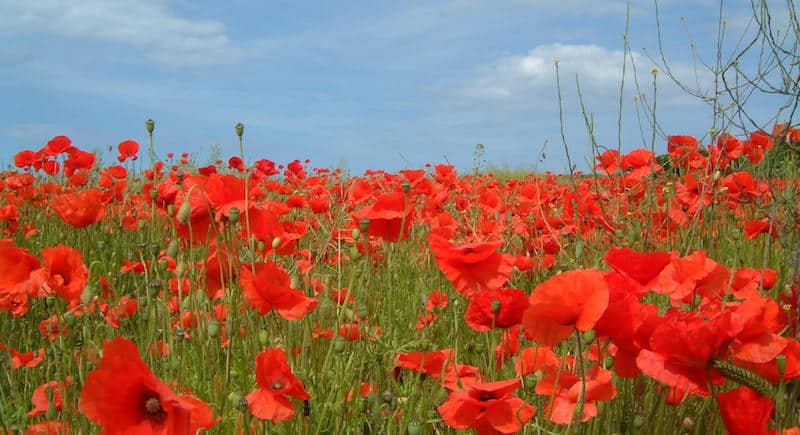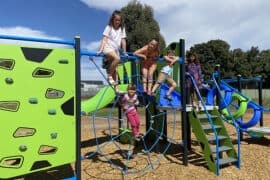Understanding ANZAC Day and the Significance of Poppies: A Parent’s Guide
Hey there, lovely parents and guardians! ANZAC Day is a significant date in the history of Australia and New Zealand, a time when we commemorate and honor our brave soldiers. As parents, it’s our privilege and responsibility to teach our little ones about the importance of this special day. But, let’s face it, sometimes explaining historical events to children can be as tricky as convincing them that broccoli is a treat! Fret not, this guide will walk you through ANZAC Day, the symbolism of the remembrance poppies, and tips on how to gently introduce your child to the concepts of remembrance and gratitude. Together, let’s make learning about this day both meaningful and engaging for our young ones!
What is ANZAC Day?
ANZAC Day, observed on the 25th of April each year, is a public holiday in Australia and New Zealand that honours the members of the Australian and New Zealand Army Corps (ANZAC) who fought during World War I, particularly at Gallipoli in Turkey. However, it’s not just about one battle – it’s a day to remember all men and women who have served and sacrificed in military operations for their countries. It’s steeped in respect, national pride, and a collective moment to reflect on peace and freedom.
The Story Behind the Poppies
Now, you may be wondering, why poppies? The story is as touching as it is educational. After World War I, fields that were once battlegrounds transformed into landscapes blanketed with bright red poppies. These flowers emerged from the disturbed soil, resilient and beautiful amidst the bleakness left by war. This remarkable scene inspired the iconic war poem “In Flanders Fields” by Lieutenant Colonel John McCrae. Since then, the poppy has become a symbol of remembrance for soldiers lost in war, not only in ANZAC countries but around the globe.
Teaching Children About ANZAC Day
Children are natural inquirers, and their questions about ANZAC Day deserve honest and thoughtful answers. Start by sharing the basics, in clear and age-appropriate language. Explain the history and why it’s crucial to remember the sacrifices made by others. Highlight the qualities of courage, mateship, and determination that the ANZACs embodied – traits we all want to instil in our kids.
Here are a few ways to make ANZAC Day more accessible and understandable for children:
- Read Picture Books: There are many children’s books that narrate the ANZAC stories with beautiful illustrations and sensitive storytelling. A snuggle and a good book is always a great way to introduce complex topics.
- Get Crafty: Children love crafts, and making poppies out of tissue paper or crafting a wreath can be a practical and fun way to commemorate. It also provides an excellent opportunity to talk about the symbolism while they are engaged in a hands-on activity.
- Attend Commemorative Services: If age-appropriate, attending a Dawn Service or ANZAC Day parade can be a profound experience for children. The solemn atmosphere and communal respect are very impactful.
- Cooking ANZAC Biscuits: Whip up a batch of these traditional treats while discussing their origin – a simple, sweet way to cement the day’s importance.
Understanding ANZAC Day helps children appreciate the peace and freedom they enjoy daily, which were hard-earned by the generations before them. By shedding light on the past, we can inspire them to contribute positively to their world, with gratitude and kindness. Stay tuned for more insights and activities to delve further into ANZAC Day with your family, ensuring that the legacy of our brave ANZAC heroes lives on through our children’s awareness and appreciation.
So my wonderful parents, let’s embark on this journey of remembrance and learning together. It’s not just about looking back; it’s about nurturing informed, empathetic future citizens who value the sacrifices made for the privileges they have today. Continue reading as we explore the somber yet heartening world of ANZAC Day and the poignant tale of the poppies.

5 Things Parents Should Know in Preparing for ANZAC Day with Poppies
As ANZAC Day approaches, it’s important to prepare our hearts and minds, especially when we are guiding our children through the profundity of this day. Here are five things to know:
-
The Significance of Dawn Services
Dawn Services are a poignant part of ANZAC Day commemorations. They reflect the time of the original Gallipoli landing and are characterized by their quiet contemplative nature. Preparing your children for the early morning and the respectful silence can be part of the learning process. Talk about how the quietness helps people remember and pay respects.
-
The Eternal Flame and Its Meaning
Often, ANZAC commemorative sites have an Eternal Flame. This is a continuous flame that burns day and night as a symbol of everlasting life and remembrance. Explain to your children that it’s like keeping a little bit of our kindness and thoughts always going, showing that we will not forget those who gave so much.
-
Last Post and the Minute of Silence
The haunting notes of the Last Post, followed by a minute of silence, is a tradition during services. The bugle call marks the end of the day’s activities and is a final farewell. Teaching children the importance of this moment of silence fosters an early appreciation for solemnity and reflection.
-
Remembrance Poppies and ANZAC Day Merchandise
Remembrance poppies and other ANZAC Day badges and bracelets are often available for purchase. Buying these not only supports veteran services but also gives children a tangible symbol of remembrance to wear. Explain that by wearing these items, they are showing respect and contributing to the legacy of the ANZACs.
-
ANZAC Day in Contemporary Context
ANZAC Day is not only about the past but resonates today with themes of service, community, and peacekeeping. Discussing current events can help children understand the ongoing importance of the lessons from ANZAC Day and how they relate to the world they live in.
Remember, preparing for ANZAC Day isn’t just about imparting historical facts. It’s about sharing stories of bravery and sacrifice that create lasting impressions. Let’s use this opportunity to provide our children with the context they need to grow into compassionate and understanding adults.
Let us also not forget the women behind the forces – the nurses, the mothers, and the daughters who contributed in invaluable ways. ANZAC Day is a time to reflect on the roles they played during war times and how they too should be remembered and celebrated.
Conclusion
By incorporating stories, symbols, and shared experiences in our ANZAC Day traditions, we pass on a legacy of respect and remembrance to our children. Whether crafting poppies, baking ANZAC biscuits, or attending a Dawn Service, you’re creating a rich tapestry of memories and understanding that your children will carry into the future. Embrace the spirit of ANZAC Day and let’s make sure the lessons of history, the values of bravery, and the beauty of remembrance stay alive for generations to come.
As we approach ANZAC Day, let’s remember to wear our poppies with pride and gratitude, and to pause and reflect on the sacrifices made by the courageous men and women who have shaped our nation’s history. Let’s show our children the true meaning of honor and memory.
For more great fun click here. For more information see here
Disclaimer
The articles available via our website provide general information only and we strongly urge readers to exercise caution and conduct their own thorough research and fact-checking. The information presented should not be taken as absolute truth, and, to the maximum extent permitted by law, we will not be held liable for any inaccuracies or errors in the content. It is essential for individuals to independently verify and validate the information before making any decisions or taking any actions based on the articles.




